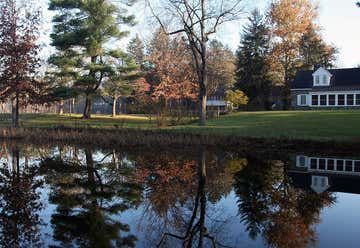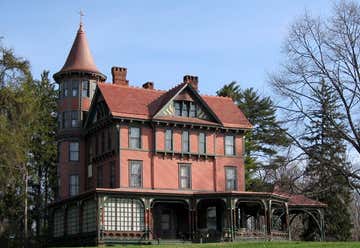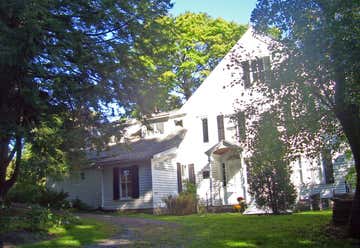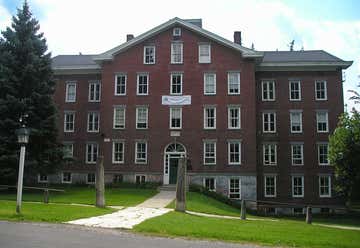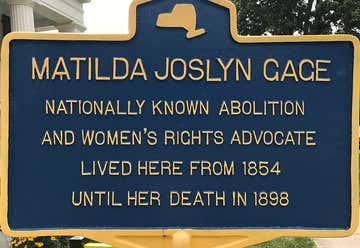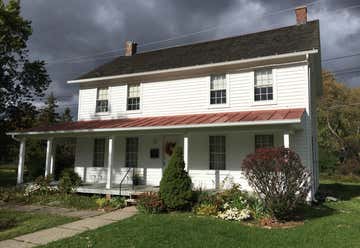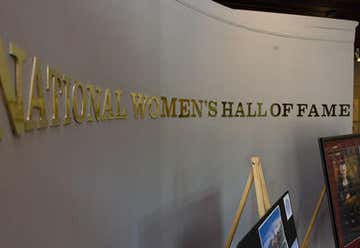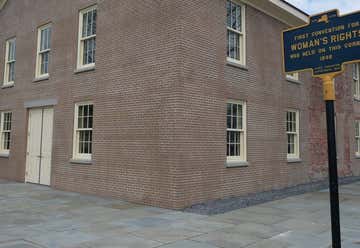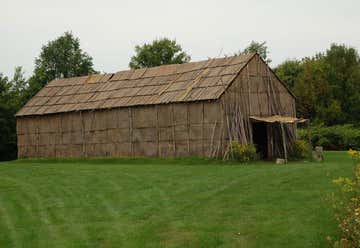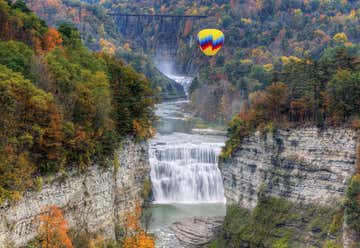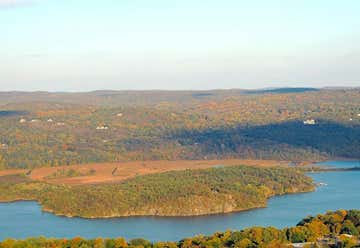New York is known as the birthplace of the women's suffrage movement—in part because many of its leaders were either born in or had ties to the state's central region. In July of 1848, more than 300 people gathered in Seneca Falls, New York, for the first Women’s Rights Convention.
Susan B. Anthony was born in Massachusetts, but she lived and died in Rochester. After freeing herself and other enslaved people, Harriet Tubman continued to care for others in Auburn; and prolific photographer Alice Austen spent three decades living and working in a Staten Island farmhouse she shared with her partner, Gertrude Tate.
New York state's Women's Heritage Trail includes homes, parks, and museums dedicated to these pioneering women and others whose impact continues to be felt long after the 19th Amendment was ratified on August 18, 1920.
Val-Kill, the only National Historic Site dedicated to a first lady, was purchased by Eleanor's husband, Franklin D. Roosevelt, in 1911. The property, located across the street from FDR's Hyde Park home, was used primarily as a picnic site until 1924, when Eleanor—and her friends Nancy Cook and Marion Dickerman—built a cottage to share year round. Following FDR’s death in 1945, Val-Kill became Eleanor's primary home. Today, the house is furnished with many of her personal possessions and the site includes a museum and gift shop.
Wilderstein is the former home of three generations of the Suckley family including Margaret (Daisy) Suckley, Franklin Delano Roosevelt's cousin and confidante. Suckley died at the age of 100 at Wilderstein in 1991 and her diaries and letters revealed important insights into FDR's private life.
Poet and playwright Edna St. Vincent Millay lived and worked on this farm in the Berkshires from 1925 until her death in 1950. Named Steepletop after a wild flower, the 700-acre property near the New York-Massachusetts border includes a garden and farmhouse filled with Millay's books, furniture, and other possessions. Designated a National Historic Landmark in 1972, the library at Steepletop contains more than 3,000 books.
Shaker Museum in Mount Lebanon moved from Old Chatham, New York, to the Mount Lebanon Shaker Village. The Shaker movement was founded by Ann Lee "as a religious community based on democratic principles and equality of work and duties regardless of gender." The museum's collection includes Shaker furniture, textiles, art, and manuscripts.
Five generations of Van Rensselaers left behind more than 70,000 items representing the daily domestic life of women here between 1787 and 1963. The historic house museum includes textiles, manuscripts, and thousands of other artifacts now housed in The Edward Frisbee Center for Collections & Research.
In 1864, Kate Mullany, a young Irish immigrant laundry worker, organized and led the all-female "Collar Laundry" labor union in Troy, New York. This three-story brick house is the last surviving structure with ties to Mullany, who eventually became the first woman appointed to a labor union's national office. The National Historic Site is currently closed while undergoing restoration but visitors wishing to pay their respects can do so at Mullany's gravesite at St. Peter’s Cemetery in Troy.
Mother Ann Lee, one of seven people who left England in the late 1700s to establish a purer form of Shakerism in New York state, lived out her final days in Colonie, New York. Formed in 1977, the Shaker Heritage Society restored the buildings that remained in the Watervliet Shaker Historic District, recognized as the first Shaker settlement in the U.S.
The Marcella Sembrich Memorial Association is housed in the Lake George teaching studio and woodland retreat of the former Metropolitan opera singer. Since 1940, the 4.5-acre estate known as Sembrich has operated as a museum, studio, and performance venue.
The 1763 Georgian-style Johnson Hall was the home of Sir William Johnson, Molly Brant, and their eight children. Johnson was the Superintendent of Indian Affairs for the Six Nations and Brant, who was Mohawk, served as a highly influential diplomat and stateswoman. The home sits on 700 acres alongside gardens, barns, a blacksmith shop, and a mill.
Matilda Joslyn Gage was a women's suffragist in the last half of the 19th century, as well as an abolitionist, Native American rights activist, and author. Founded in 2000, the Matilda Joslyn Gage Foundation was established to celebrate Gage, who was seen as radical compared to more mainstream suffragists like Susan B. Anthony and Elizabeth Cady Stanton.
Harriet Tubman worked as a nurse in addition to personally leading family members and other enslaved people to freedom. After the Civil War, Tubman settled in Auburn, establishing the Home for the Aged and the John Brown Infirmary near her own home. Today, The Harriet Tubman National Historical Park includes the Home for the Aged, Tubman's personal residence, and the Thompson Memorial African Methodist Episcopal Zion Church. Tubman is buried nearby in Auburn's Fort Hill Cemetery.
Since 1973, "the nation’s oldest membership organization dedicated to honoring and celebrating the achievements of distinguished American women" has inducted 293 women into its Hall of Fame. The National Women’s Hall of Fame now occupies the first floor of the newly-renovated, historic Seneca Knitting Mill in Seneca Falls, New York. Listed on the National Register of Historic Properties, the Mill—and the women it once employed— has ties to the women’s rights and abolitionist movements.
The first Women’s Rights Convention was held in Seneca Falls in July of 1848. The Women’s Rights National Historical Park includes a visitor center, historic homes, and the Wesleyan Chapel. The convention of approximately 300 people, which took place inside the chapel, is largely regarded as the formal beginning of the Women’s Rights Movement in the U.S.
Located in Victor, New York, the Ganondagan State Historic Site is "the only New York State Historic Site dedicated to a Native American theme, and the only Seneca town developed and interpreted in the U.S." The 569-acre site, home to a 17th-century Seneca town for more than 300 years, includes the fully-furnished Seneca Bark Longhouse, the Seneca Art & Culture Center, and interpretive hiking trails.
Located in Rochester, New York, the National Susan B. Anthony Museum & House was Anthony's personal home as well as the site of her infamous 1872 arrest for voting. The three-story brick home doubled as the headquarters of the National American Woman Suffrage Association when Anthony was its president. She died here in 1906. Today, the home houses exhibits and artifacts related to her life, work, and the women's movement she is credited with inspiring.
Located in Jamestown, Lucille Ball's hometown, The Lucy Desi Museum features recreations of studio sets, costumes, props, scripts and Emmy Awards from I Love Lucy. Dedicated to the “First Couple of Comedy,” the museum is just three blocks from the National Comedy Center, near the Lucille Ball Memorial Park (home of the notorious "Scary Lucy" statue), and Ball's childhood home.
Letchworth State Park in Castile, New York, is known as the "Grand Canyon of the East" for its waterfalls, forests, and hiking trails. The William Pryor Letchworth Museum and Council Grounds, located in the park, houses the collections of Letchworth, a 19th-century industrialist and social reformer interested in the area's Native American history. Letchworth worked with descendants of Mary Jemison, a white captive of the Seneca, to tell her story through the museum; the site also includes a Seneca Council House. Jemison's grave, and her daughter’s cabin.
Slocum Howland's cobblestone store was a stop on the Underground Railroad. His daughter Emily championed Black and women’s rights issues until she died at nearly 102, and Howland's granddaughter Isabel—also a teacher and suffragist—rebuilt a house down the road named Opendore. This house and Howland's store, both located in Sherwood, are on the National Register of Historic Places.
Located on Constitution Island in the Hudson River, the Warner House was home to Susan and Anna Warner from 1836 to 1915. The sisters were published authors and teachers who taught Bible classes to West Point cadets for decades. Today the home is a living museum, kept as it was when Anna died in 1915.
Bill and Lois Wilson co-founded Alcoholics Anonymous and today the Stepping Stones Foundation houses their archives. The site includes the couple's home and writing studio, a welcome center, and gardens. Stepping Stones "shares the story of hope for the recovery from alcoholism, in the individual and the family, as it is embodied in the lives and home of these two extraordinary individuals."
Roadtrippers
Roadtrippers helps you find the most epic destinations and detours—from roadside attractions to natural wonders and beyond.

